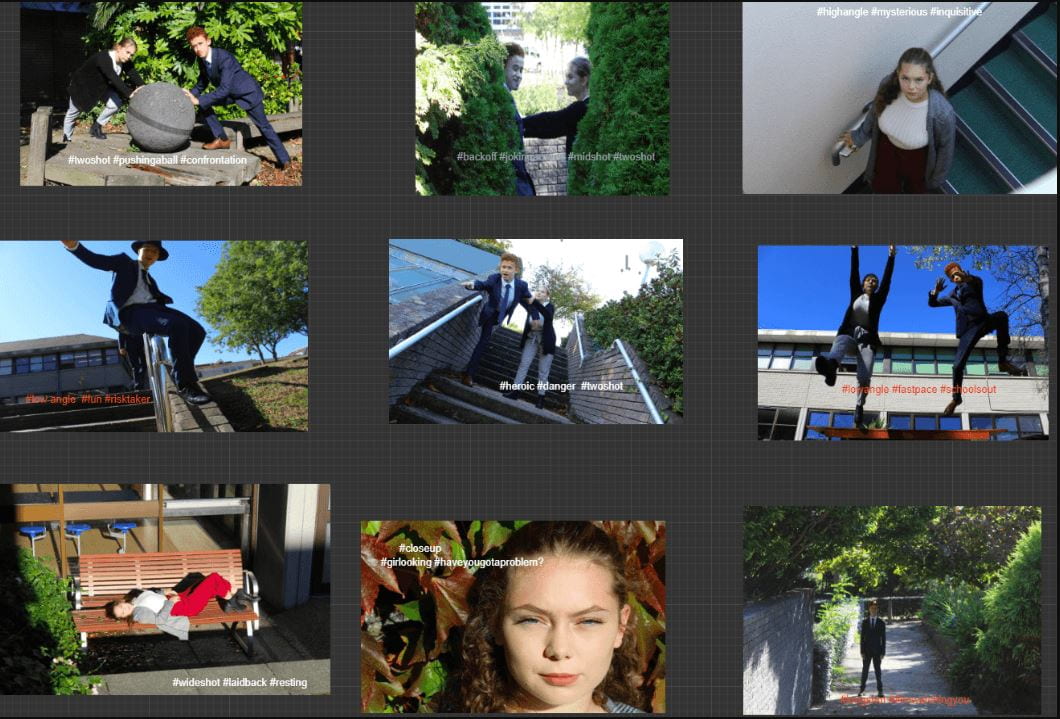TASK 1
In groups of @ 3, you must take at least 50 photos around school that attempt to tell a story – use distance, angle and framing to show how the camera can make meaning. Use each other as models or props that are easily obtainable. Think too about MES – particular body language, facial expression, posture, proxemics and gesture but the camera work is your main story telling tool.
For example:
- an extreme close up of a tear stained eyes could underline a character’s sadness and vulnerability.
- an extreme long shot of a man standing alone on a deserted beach might portray his isolation and solitude.
- a two shot of a two people, with one in the foreground looking away from the camera and the other slightly out of focus in the background could add an enigmatic, mysterious feel to the scene as well.
Remember to consider:
- Angle – high, low, canted x 3, aerial
- Distance – ECU, MS, LS, ELS x 3
- Composition – rule of thirds, lead space and Depth of Field x 3
TASK 2 –
KEY TERMS: DISTANCE, ANGLE, FRAMING, COMPOSITION, NARRATIVE, REPRESENT
Technical Camera Terms (blog post)
Upload the contact sheet to your blog and reflect on how you coped with the DSLR functions and how you achieved your goal of telling stories using a camera. Always focus forward too – how will this approach to taking photographs help you with your own music magazine production?
TASK 3 –
KEY TERMS: TECHNICAL TERM, DENOTATION, CONNOTATION, REPRESENT, NARRATIVE, IMAGE AND AN IDEA
The Camera Talks (blog post)
Each photo should then be uploaded to a moodboard of your choice (see suggestions below). You will then
- #the technical term (#longshot#lowangle)
- #the example/denotation (#manalone#teacherlookingcross)
- #the analysis/connotation (#lonely#excited#leaving)
Try and get some special FX in too i.e. motion speed blur or DOF?
Use locations around the school (but be respectful and safe) i.e. from a high angle at the top of the stairs looking down at your subjects or a low angle looking up at your subject/frames/point of views, lead space looking wistfully out of a window at the sky?
MOODBOARD SUGGESTIONS:
- google slide but this is a bit over used now so why not branch out?
- gomoodboard.co (snip tool the board and save as jpeg, save and publish and copy the URL, link this URL to the jpeg in the post and ask the examiner to click on the image to see the analysis/hashtags).
- canva.com
- spark.adobe.com
- goboard.com
DISTANCE
ANGLE
COMPOSITION
Please click on the moodboard below to see how the comments on the meaning and composition of the shots have been compiled. Good luck. HAVE FUN!
